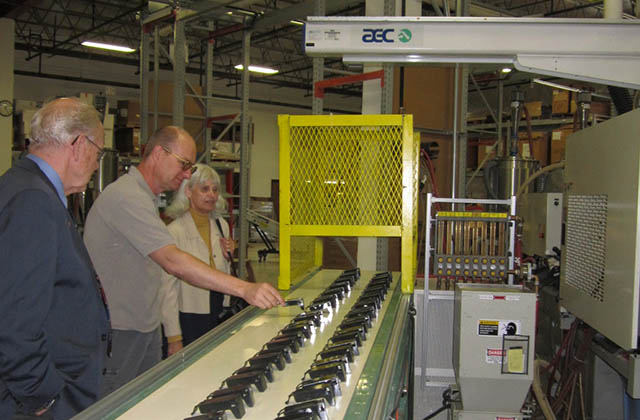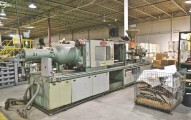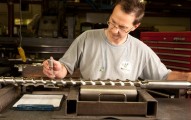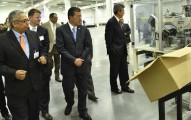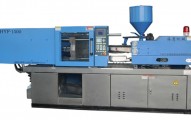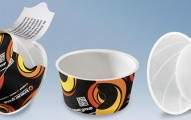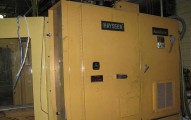The Future Of Plastics Manufacturing In The U.S.
The future of plastic manufacturing in the United States is far from certain, but many trends are beginning to take shape. From the accelerating pace of 3D printing innovation to new production procedures, plastic manufacturing will likely continue to be a strong yet steadily changing segment of the manufacturing industry overall.
Economists and analysts are watching trends in manufacturing closely, as it’s an industry that is in part driving the economic recovery in the United States. While predictions vary, they all point to significant change. Below are a few trends and predictions related to U.S. plastic manufacturing.
1. 3D Printing is Here to Stay, and It’s Only Getting More Popular
3D printers aren’t necessarily new technology in the United States, but the practice of using 3D printing in plastics manufacturing is becoming more and more common. 3D printing is a technology that allows a manufacturer to create virtually any object — as long as it is self-supporting and in one complete piece. While other materials can be used in 3D printing, it’s typically a manufacturing technique used in plastics and resins. The benefits of 3D printing are that the objects can be made more quickly and more efficiently. And importantly, 3D printers are incredibly accurate. Already, 3D printing is being used in the health care industry and is used to create parts and components for almost every sector of manufacturing. It’s a meaningful trend and one that will likely continue to shape how manufacturing is done in the U.S. and abroad. Expect operations that are far more efficient and objects that are manufactured to be more complex, lighter weight and reliable.
2. Robots and New Technologies are the New Norm in Manufacturing
While 3D printing is one of the more widely recognized manufacturing developments in the last decade — thanks in part to media outlets that like the futuristic sound of it — manufacturing is a hotbed for other innovations. The plastics industry is no different and, in fact, shows much potential for advances resulting from new technologies. The last century saw huge developments in automation — from vehicles to food products to common household items. One major component is the development of robots that can perform manufacturing tasks more quickly than their human counterparts. They are also considered to be less prone to error and cheaper over the long term. Manufacturing robots are getting more precise, and they are increasingly used for more complex tasks. Expect a plastics manufacturing environment in which most physical tasks are done by automated machinery, while engineers, scientists and technology professionals take on a larger role in the industry.
3. Domestic Manufacturing is Making a Comeback
A bright spot in the seeming manufacturing renaissance (at least, one for U.S. companies) is that it is no longer profitable for manufacturing companies to take business overseas. The global market is changing. Wages are going up in places where labor previously was dirt cheap. Rising costs for shipping have virtually erased any advantage a company might have found by seeking cheaply made products on the other side of the world. Competition is also driving this change. Local companies increasingly have options, and they are getting pickier. They like to have more local control over the products they buy. As a result, they are seeking out manufacturers who do business locally. At this point, it is still unclear what local manufacturers can expect. It’s certainly good news for the locals, but it might not be the return to old times that some hope for — and that’s because the jobs resulting from new domestic manufacturing are almost unrecognizable from the U.S. manufacturing heyday of the mid-1900s. As explained above, technology is largely the reason. So while traditional manufacturing jobs might not make a comeback, the tech side of manufacturing will almost certainly breathe life into the industry.
4. Plastic Injection Molding is Here to Stay
Some things never change — or at least they are working well enough that the industry has no cause to abandon them. Plastic injection molding falls into that category. It’s one of the most basic and reliable methods for manufacturing plastic components. In short, plastic injection molding is the process of creating a mold and injecting it with thermoplastics and thermosetting polymers to create a sturdy end product. Like 3D printing, it is considered highly accurate and a staple in manufacturing. Every industry from food to automotive relies on plastic injection molding.
Whatever results from the evolving plastics manufacturing industry, it will be an interesting change to observe. In the end, the manufacturers who are best able to adapt will be the ones who thrive. And the ones who are able to embrace changing technology will be the ones who ultimately decide the direction we take.

